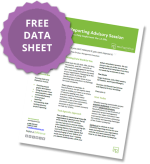3 Keys to Creating Your Strategic AI Roadmap
Artificial Intelligence (AI) is transforming the enterprise landscape, offering unparalleled opportunities to enhance operations, innovate products, and deliver exceptional customer experiences. However, realizing the full potential of AI requires more than just adopting the latest technologies. It demands a strategic approach—a well-defined AI roadmap that aligns with your business goals and sets a clear path forward. Here are three essential keys to creating your strategic AI roadmap:
1. Align AI Initiatives with Business Objectives
The first and most critical step in creating a strategic AI roadmap is to align AI initiatives with your overarching business objectives. AI should not be pursued for its own sake but rather as a means to achieve specific business outcomes. To ensure this alignment, start by identifying your business goals and the challenges you aim to address. Here’s how to do it:
- Define Clear Objectives
Begin by defining clear and measurable objectives. Are you looking to improve operational efficiency, enhance customer experience, drive innovation, or increase revenue? Specific goals will help you identify the areas where AI can have the most significant impact.
For example, if your objective is to improve customer experience, consider how AI can help. AI-driven chatbots can provide 24/7 customer support, predictive analytics can personalize customer interactions, and language learning algorithms can anticipate customer needs and preferences.
- Identify Key Use Cases
Once you have defined your objectives, identify key use cases where AI can deliver value. These use cases should be directly tied to your business goals. Conduct a thorough analysis to understand how AI can address specific pain points and opportunities within your organization.
For instance, if your goal is to enhance operational efficiency, AI can automate routine tasks, optimize supply chain management, and improve decision-making through predictive analytics. Prioritize use cases based on their potential impact and feasibility.
- Involve Stakeholders
Engage stakeholders from across the organization in the process of defining objectives and identifying use cases. This includes executive leadership, business unit leaders, IT, and end-users. Collaboration ensures that AI initiatives are aligned with the strategic direction of the company and have the necessary support for successful implementation.
By aligning AI initiatives with business objectives, you create a clear purpose and direction for your AI roadmap, ensuring that every effort is geared towards achieving tangible business outcomes.
2. Build a Strong Data Foundation
AI is only as good as the data it operates on. Therefore, building a strong data foundation is a crucial element of any AI strategy. This involves ensuring data quality, availability, and governance. Here’s how to establish a robust data foundation:
- Ensure Data Quality
High-quality data is essential for the success of AI initiatives. Poor data quality can lead to inaccurate models and flawed insights. To ensure data quality, implement data cleansing processes to remove errors, inconsistencies, and duplicates. Standardize data formats and establish data validation rules to maintain accuracy and reliability.
- Integrate Data Silos
Data is often scattered across different systems and departments within an organization, creating silos that hinder AI efforts. Integrate data from various sources to create a unified view of your business. This may involve implementing data integration tools, building data warehouses or data lakes, and adopting data management platforms that facilitate seamless data flow.
- Implement Data Governance
Effective data governance ensures that data is managed, accessed, and used responsibly. Establish clear data governance policies and procedures to define data ownership, access controls, and compliance requirements. Data governance also involves setting up data stewardship roles to oversee data quality and integrity.
Additionally, consider leveraging advanced data management technologies such as master data management (MDM) and metadata management to enhance data governance and ensure that your data is ready for AI applications.
3. Foster a Culture of Innovation and Collaboration
The successful implementation of AI requires more than just technology and data; it necessitates a culture of innovation and collaboration within your organization. Cultivating this culture involves promoting continuous learning, encouraging experimentation, and fostering cross-functional teamwork. Here’s how to do it:
- Promote Continuous Learning
AI is a rapidly evolving field, and staying updated with the latest advancements is crucial. Encourage continuous learning by providing training and development opportunities for your employees. This includes offering courses on AI and machine learning, attending industry conferences, and participating in online forums and communities.
Invest in building AI skills across your organization, not just within the data science team. Empower employees at all levels to understand AI concepts and how they can be applied to their roles. This will create a workforce that is more adaptable and capable of driving AI initiatives forward.
- Encourage Experimentation
AI innovation thrives on experimentation and iteration. Create an environment where employees feel safe to experiment with new ideas and approaches without fear of failure. Implement pilot projects and proofs of concept (POCs) to test AI solutions on a small scale before rolling them out across the organization.
Encouraging experimentation also involves providing the necessary resources and tools for employees to explore AI. This includes access to AI platforms, cloud computing resources, and data sets. By fostering a mindset of experimentation, you can uncover new AI use cases and continuously improve existing solutions.
- Foster Cross-Functional Collaboration
AI projects often require collaboration between various functions, including IT, data science, business units, and domain experts. Break down organizational silos and promote cross-functional collaboration to leverage diverse perspectives and expertise.
Establish cross-functional teams that bring together individuals with complementary skills and knowledge. Encourage open communication and knowledge sharing to ensure that everyone is aligned and working towards common goals. Collaboration will drive innovation and accelerate the successful implementation of AI initiatives.
Creating a strategic AI roadmap is essential for leveraging the transformative power of AI in the enterprise. By aligning AI initiatives with business objectives, building a strong data foundation, and fostering a culture of innovation and collaboration, you can set a clear path for successful AI adoption. Remember, AI is not just a technology but a strategic enabler that can drive significant business value when implemented thoughtfully and strategically. As you embark on your AI journey, keep these three keys in mind to unlock the full potential of AI and achieve your business goals.
Subscribe for the latest RP Blog Updates:










